In my role, I attend many conferences, but this year the Shoppers Home Health Care Innovations Show truly had an impact. In fact, “impact” was the theme of the conference, addressing the benefits of personal and professional development, and providing resources and information with immediate practical applications.
Impact
Reigniting our passion
Physician and author, Dr. Susan Biali shared her journey towards “living a life you love,” and shared tips that will help us all move in that direction. As a fellow health care professional, she is acutely aware of the unique challenges we face as providers and how difficult and stressful working in health care can be at times. By sharing her own story of completing medical school and along the way becoming a professional Flamenco dancer as well, she offers participants insight into how they can find and ignite passion in their own lives.
Impact
Fall prevention
Fall prevention is a timely issue given Canada’s aging demographic. With one in three older adults falling each year, we now have evidence that shows falls are the leading cause of fatal and non-fatal injuries in older adults. The latest research and resources for fall prevention were presented by a panel of experts from across the country. Participants also had the opportunity to interact with these experts in the exhibit hall and share resources.
Impact
Seating and mobility
A number of workshops focused around providing seating and mobility equipment for clients. From best practices to justifying a prescription and finding funding, this robust selection of workshops gave participants the tools and perspective to provide your clients with the best prescription possible.
Impact
Professional development
Of course, I would be remiss to not include my excitement about visiting the exhibit hall. It was a great opportunity to see new equipment, discuss clinical situations and solutions and network with your colleagues, Shoppers Home Health Care representatives and manufacturer representatives. See below for a few of my favourites as well as highlights from several experts and presenters.
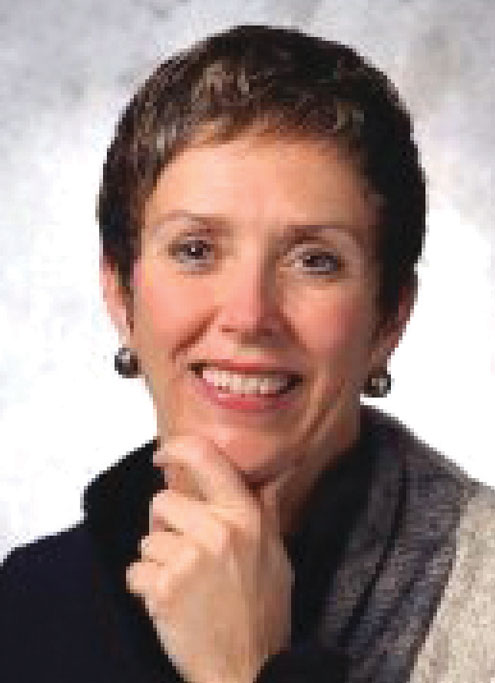 Validation!
Validation!
Can you justify your seating and mobility prescription?
Sheila Buck B.Sc(OT), Reg. (Ont.), ATP
In order to achieve best practice scenarios for seating and mobility prescriptions, therapists must follow principles of practice. These include maintaining a client-centered practice and effective communication as well as following a systematic approach to service delivery. Having professional accountability, knowing your role and not off-loading your job requirements to others if you are not knowledgeable is a must. We must aim for conscious competency in order to “do no harm” to our clients!
In order to achieve assessment competency, a therapist must understand posture and seating principles as well as ergonomic and biomechanical principles for mobility. It is critical to understand how to complete a Manual Assessment Tool, how to measure a client for a wheelchair, and how to turn this information into wheelchair and seating measurements and parameters. In order to do this the therapist must understand the advantages and disadvantages of wheelchair and seating features, benefits and options.
The seating and mobility process should follow systematically through the following steps:
• referral
• interview of the client, caregiver and team involved
• client evaluation
• equipment simulation
• equipment prescription and justification to funders (including the client)
• delivery and training of caregivers and client
• client follow-up
In order to determine current equipment needs it is important to review the current equipment in use and what has been abandoned. Ask what the client needs or wants the equipment to do for them for function. Review the current method of propulsion as well as what may work better in the future. By the end of the assessment, you should be able to describe the client’s posture and function in equipment already owned, as well as what the objectives for the new system will be.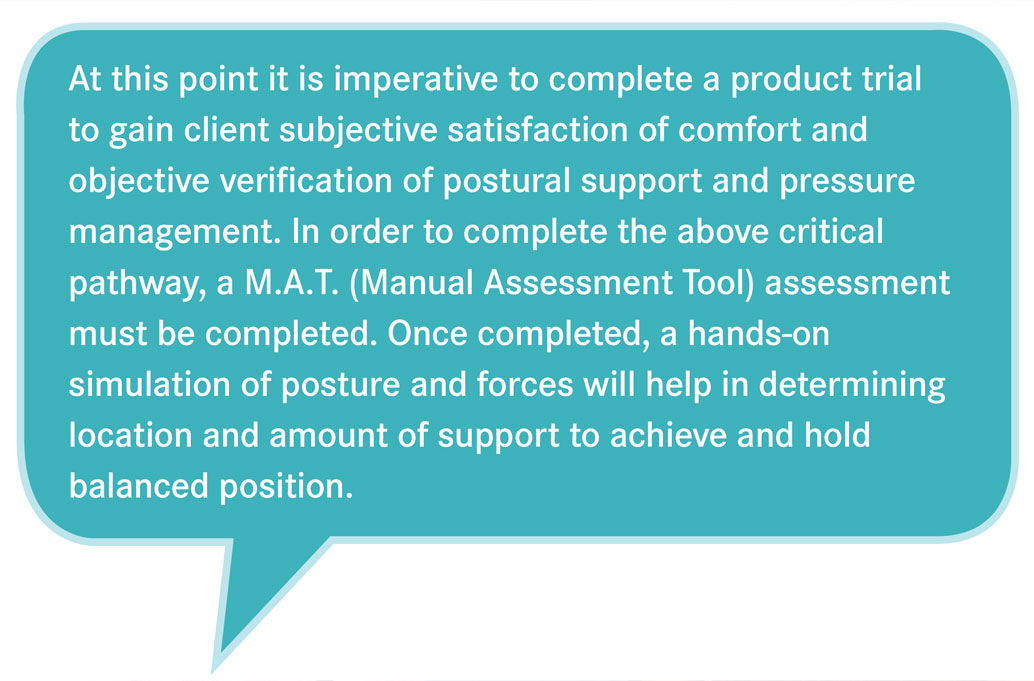
In order to complete a prescription justification you must be able to identify the client’s current problems and potential for function and from there, develop goals and state your objectives for the seating intervention. After doing this you will be able to identify product properties, and with the assistance of the vendor or manufacturer, translate the parameters into product options.
At this point it is imperative to complete a product trial to gain client subjective satisfaction of comfort and objective verification of postural support and pressure management. In order to complete the above critical pathway, a M.A.T. (Manual Assessment Tool) assessment must be completed. Once completed, a hands-on simulation of posture and forces will help in determining location and amount of support to achieve and hold balanced position.
During this simulation it is important to observe head position including cervical flexion and hyperextension, upper extremity position including shoulder protraction/retraction, reach, and grip strength. Additionally it is important to determine the effect of tilt or recline on positioning, repositioning, relaxation, and tone. During simulation you are able to determine if you are able to “correct” posture into a desired position for stability or accommodate a static position. By having your “hands on” your client you will be able to determine how much force your hands are applying to hold this position for the client. Once you have achieved a position of balance and stability for both working and resting postures, it is important to determine if the final position is agreeable to the client and caregivers for relaxation, function and support, swallowing and communication as well as transfers.
During the assessment and prescription phase, a therapist must consider the current theories related to seating and mobility. A sampling of these theories is listed below:
1. Maximize support area without compromising mobility and function
2. Pressure = Force
Area (decrease pressure by increasing area.
Monitor force/gravity and how/where it is applied)
3. Foot loading – consider seat surface depth versus wheelchair depth for feet that are supported at 90 degrees to gain upper trunk extension
4. Postural control for midline function utilizing three point positioning: lateral, anterior and posterior
5. Propulsion style/centre of gravity: reassess every time the client’s seating is changed, or when the client changes
6. Support the pelvis/sacrum at PSIS (posterior superior iliac spine) level to prevent changes in posterior pelvic tilt and to allow for trunk extension above this point. If the support is too low it will push the buttocks forward and if too high will allow sacral tilt. Therefore it is very important to specify back height mounting and set-up
Lastly, it is important to define with the client, caregiver and rehab team what are the most critical tasks and desired outcomes. Trying to address too many tasks may dilute the effectiveness of the system in any of those tasks leading to abandonment of the equipment. Follow up to ensure the final setup is per the prescription. Education for the client and caregivers is mandatory. In the end, you need to know what you have done to justify it to others!
Sheila Buck is an Occupational Therapist and owner of Therapy NOW! Inc., Milton, Ontario, providing consultation, education and clinical evaluation of seating and mobility/assistive technology. Sheila has spoken extensively on this topic and utilizes her 30 years of clinical experience as an extension of her teaching. Sheila has authored a clinical guide to seating and mobility titled “More Than 4 Wheels: applying clinical practice to seating, mobility and assistive technology”. It is being used around the globe as a guide to practice. The book can be purchased at www.sheilabuck.ca
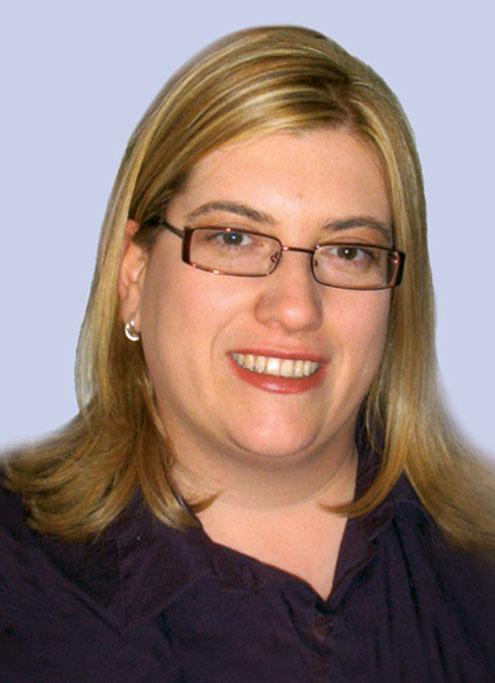 Fitting for function
Fitting for function
Assessment and prescription best practices
Linda Norton OT Reg.(ONT), MScCH National Education and CEP Liaison
Seating and mobility equipment is prescribed to help meet client goals, yet up to 30% of this equipment is abandoned by the user. Following specific guidelines regarding wheelchair and seating provision may help to reduce the issue of abandonment and create some consistency in practice.
The Rehabilitation Engineering and Assistive Technology Society of North America (RESNA) has published guidelines that detail a systematic approach to the provision of wheelchair and seating equipment. These guidelines are consistent with Guidelines for the prescription of a seated wheelchair or mobility scooter for people with a traumatic brain injury or spinal cord injury out of Australia.
In the RESNA document, clinicians are encouraged to “remain current and informed regarding technological advances, to balance reimbursement and productivity management issues, and to accurately assess their client’s needs and goals.” Nine service components are recommended: Referral; Assessment; Equipment Recommendation and Selection; Funding and Procurement; Product Preparation; Fitting; Training and Delivery; Follow-up, Maintenance and Repair; and Outcome Measurement.
Completing all of these steps may seem daunting to clinicians in some settings; however, it is important that we advocate for the opportunity to follow best practices. In addition to advocating, perhaps the opportunity is to take one step closer to best practice as a result of reading this article.
Referral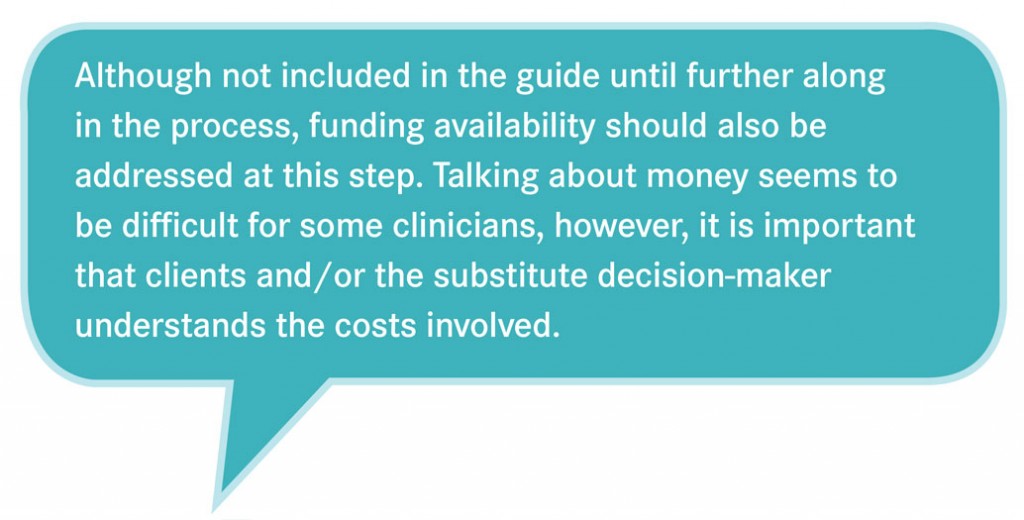
A series of questions need to be considered when considering the referral source used:
• What is the source of your referrals?
• Who screens the clients referred to you for an assessment?
• Are the referrals appropriate?
• Are you getting the information you need?
• Who is orienting the client to the process and the costs?
• If you are receiving referrals from a consistent source, consider working with them to ensure that they screen the referrals so that you are only receiving appropriate referrals. Giving them information regarding the process and costs involved will help to ensure that the client is informed before they are referred.
Assessment
“Wheelchair prescription is complex and involves the intersection of three variables: the wheelchair user, the wheelchair technology, and the environment or context of the user” The key is to ensure that each area is addressed.
One approach is to use the International Classification of Functioning, Disability and Health (ICF). This approach encourages therapists to consider three broad categories: body structure and function; activities and participation; environment and current technology.
Although not included in the guide until further along in the process, funding availability should also be addressed at this step. Talking about money seems to be difficult for some clinicians, however, it is important that clients and/or the substitute decision-maker understands the costs involved.
“When coverage is limited, the team should discuss additional available funding resources with the client…. It is also important to address the client’s priorities and assist him or her in making any necessary product compromises/decisions due to funding parameters.”
Clinicians may be tempted to make decisions for clients based on the funding available; however, it is important for the client to understand the funding limitations and have the opportunity to supplement this funding if it enables them to obtain the equipment they believe is best.
Equipment recommendation and selection
The RESNA guide states “When feasible, it is helpful for a client to have an opportunity to use the wheelchair for a short period of time to determine if it meets his or her mobility needs in the various environments he/she needs to function.” Clients who have not used a wheelchair in the past or those who are new power wheelchair users will find a trial particularly helpful. This helps to ensure that the prescribed equipment is appropriate and meets the client’s needs. Clinicians are encouraged to use objective measures to quantify the impact of the equipment.
Funding and procurement
Although prescriptions should be specific to the individual, some clinicians get stuck prescribing the same chair with the same features for multiple clients. It’s important that the assessment discussed earlier is comprehensive, and that the components of the wheelchair are chosen to address the identified needs. This is also the time in the process to ensure the client is committed to using the equipment once prescribed.
Clinical documentation is critical during this process. It is recommended that the following components are documented:
• Client-specific identified problems and goals
• Client’s physical, functional, and environmental needs
• Limitations of the current equipment
• Assessment results
• Rationale for the recommendations
• Outcome measures
• Description of any other products that were tried and the outcome
• Specific, detailed information on the clinical rationale for the selected product(s) and components
Fitting, training and delivery
Fitting, training and delivery are critical components in the wheelchair and seating provision process. Ideally the clinician should be present at all times to ensure that the equipment is set up as prescribed and meets the client’s needs. This is particularly important when power mobility equipment is being delivered. Driving parameters may need to be adjusted, and additional training may need to occur to ensure that the client remains safe.
Training for the client and caregiver should include:
• Power or manual wheelchair mobility skills
• Set-up of the system and features of the system
• Parts management (care, removal of components, charging etc)
• Maintenance, follow-up and repair
• Integration of the device into the client’s lifestyle
Follow-up
Follow-up is a time to ensure that the prescription meets the client’s needs and goals, as well as an opportunity for the clinician to learn. Seeing the client after they have had the opportunity to use the mobility equipment in their day-to-day life can help the clinician to better understand the long-term impacts of seating interventions.
Final Thoughts
Clinicians are pressed for time; however, it is important to implement a standardized process to ensure clients have the best outcome possible. Following the steps outlined in the RESNA guide is one way to help ensure consistency of practice across clinicians.
Take the next step towards best practice today.
References available upon request.
Linda Norton OT Reg.(ONT), MScCH is a registered occupational therapist with a master’s degree in community health. Her career has focused on the provision of adapted equipment including mobility aids to people with disabilities to foster increased independence and quality of life. Linda is responsible for education nationally at Shoppers Home Health Care. She also teaches at the University of Toronto and the University of Western Ontario. In September 2012, Linda entered a PhD program in health and rehabilitation sciences at the University of Western Ontario.
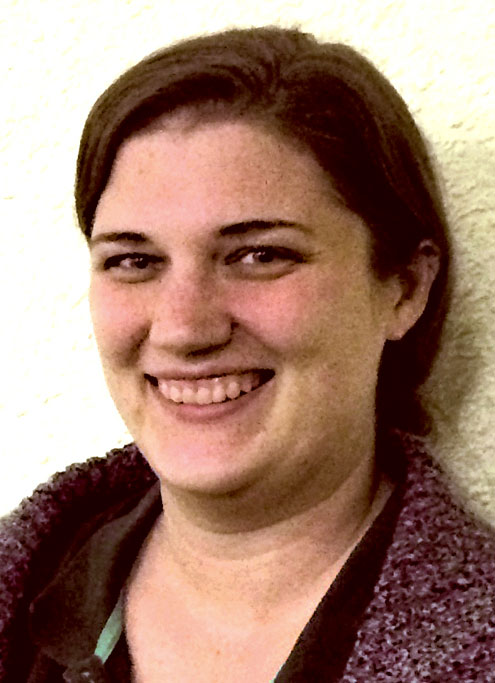 The rehabilitation to community process
The rehabilitation to community process
Developing transition programs for individuals post-rehabilitation
Sherri Risto
Following discharge from a rehabilitation facility, individuals report a reduction in social and leisure activities. Collaborative community reintegration is essential to supporting an individual’s transition. This session focused on bridging the gap between rehabilitation and community facilities.
According to Rimmer’s (2012) research on Getting Beyond the Plateau, the rehabilitation process usually results in a short-term gain in health and function, which gets the individual above the minimum level of function threshold for ADLs and stabilizing health. After a few weeks of gradual improvement after rehabilitation the individual plateaus for a short period and reaches an inflection point where their health can either improve or decline. With a continued sedentary lifestyle patients fall below minimum level of function threshold which increases risk of co-morbidities.
Successful community integration is key for patient success in community-based exercise. Community integration means more than physical and social access and community means more than a place or population aggregate. It is imperative to have access to meaningful relationships and engagement in social support.
Meaningful relationships do not happen instantly but are developed progressively. Duck (1994) proposed that meaningful relationships form through the development of shared understanding – for example shared experience, reflection or interaction. At the beginning stages of relationship building people may connect through commonality of experience – when the same event occurs in the lives of two people. From this commonality of experience, mutuality of understanding may occur. Mutuality is seen when both individuals share feelings and thoughts about the common experience, thereby creating a common form of reference. This mutual frame of reference permits an equivalence of evaluation. Through the evaluation of one’s own thoughts and feelings about the topic or event, as well as those of the other, one may begin to recognize equivalence of values that are shared. Finally this equivalence of understanding can expand beyond a single common experience to sharing of meaning. This may include other unrelated domains. Although Duck’s model includes primarily dyadic social relationships, the same principles may apply to larger group dynamics in leisure settings where participants can effectively create commonality of experience through social interaction with people with similar interests.
Thus, Stroke Transition Programs have begun from this identified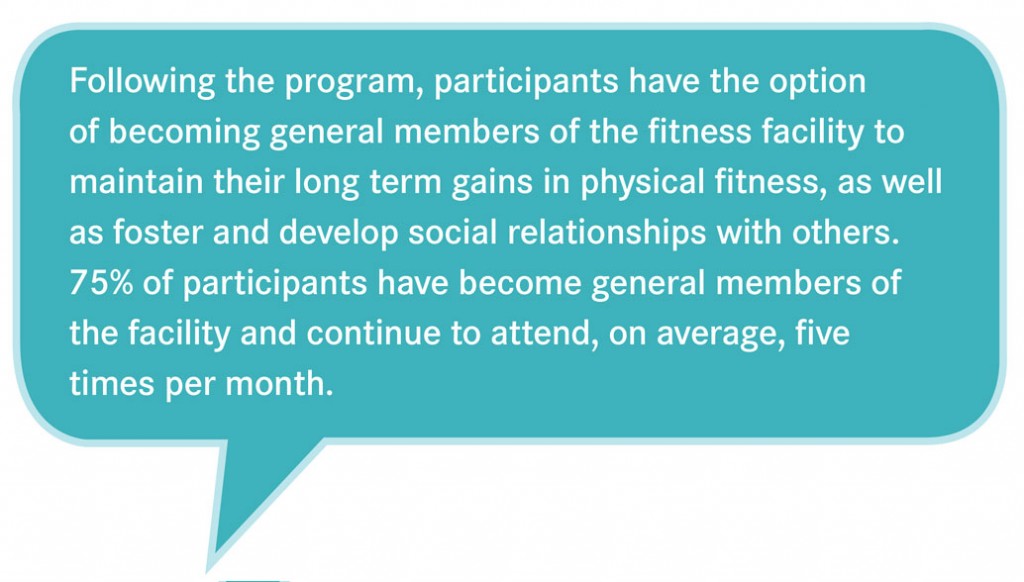 need in our community. Variety Village is a fully accessible fitness facility with relationships with rehabilitation facilities in the Toronto area. Many therapists bring their patients for a tour of Variety Village prior to discharge; however, many people need extra support for independent participation. Transition initiatives strive to bridge the gap between rehabilitation and community recreation facilities. In 2013, Variety Village conducted three pilot programs for Stroke Transition. For 2014, due to the success of our 2013 programs, we have continued with another three programs for Stroke Transition, as well as two programs for Orthopaedic, Musculoskeletal and Geriatric Rehabilitation and a Spinal Cord Injury Transition Program.
need in our community. Variety Village is a fully accessible fitness facility with relationships with rehabilitation facilities in the Toronto area. Many therapists bring their patients for a tour of Variety Village prior to discharge; however, many people need extra support for independent participation. Transition initiatives strive to bridge the gap between rehabilitation and community recreation facilities. In 2013, Variety Village conducted three pilot programs for Stroke Transition. For 2014, due to the success of our 2013 programs, we have continued with another three programs for Stroke Transition, as well as two programs for Orthopaedic, Musculoskeletal and Geriatric Rehabilitation and a Spinal Cord Injury Transition Program.
Variety Village’s Stroke Transition Program has supported 60 participants to date. This included 26 women and 34 men with an average age of 65 years old (range 42-90 years old). Through the physical fitness assessments conducted at the beginning and again at the end of the program participants saw a marked increase in their flexibility, endurance, sit to stand ability and balance.
— TUG – reduced time by 24.5%
— chair sit and reach – increased reach by 1.8 inches
— 30 second sit to stand – increased stands by 36%
— 6 minute walk – walked 24% further
Following the program, participants have the option of becoming general members of the fitness facility to maintain their long term gains in physical fitness, as well as foster and develop social relationships with others. 75% of participants have become general members of the facility and continue to attend, on average, five times per month.
We have had great feedback from participants and their families on the benefits of the program:
• “I want to do it and it makes me work.” – DF, Age 82
• “Give a man a fish and he will eat for a day, teach a man to fish and he will eat for a lifetime. You have taught me to fish.” – MS, Age 69
• “I feel more confident and in control of my transfers.” – FB, Age 77
• “The socializing has done wonders for him. He comes home every Tuesday and Thursday raving about the program and counselors.”- Wife of participant CY, Age 48
We hope that this program will continue to serve as a framework to future community physical fitness transition programs for a variety of participants who are discharged from rehabilitation hospitals or who are facing new realities. Consider how you can apply this process to your local community or facility!
Sherri Risto is a coordinator for the Rehabilitation to Community and Education at Variety Village developing and leads the Rehabilitation to Community Transition Programs and teaches curriculum-based courses in inclusive recreation at University of Toronto, Centennial and Humber Colleges. She is a graduate of the University of Waterloo’s Recreation and Leisure Studies program (Therapeutic Recreation).
Reference available upon request.













